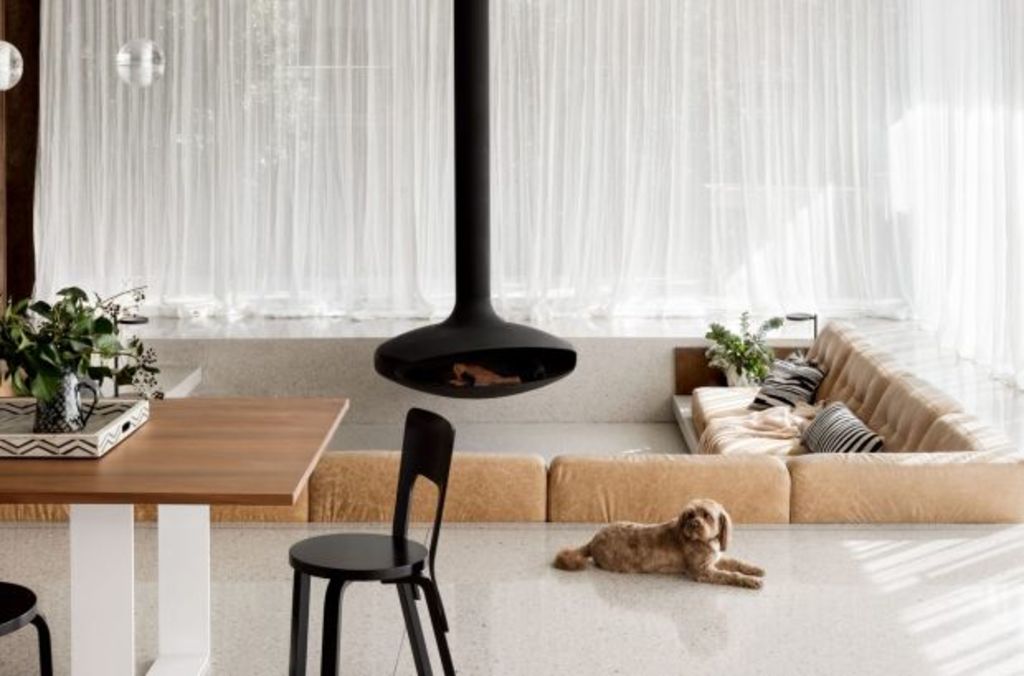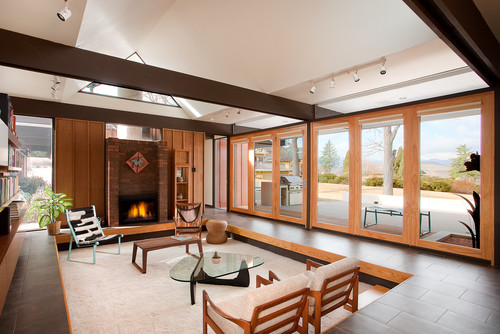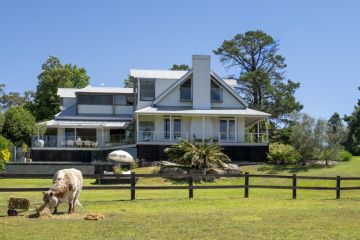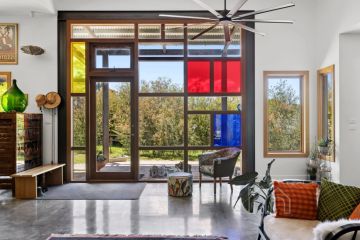The 1970s conversation pit is about to make a big comeback

Wish you had a nook at home, sans television, designed specifically for the purpose of lazy communal lounging? Well you’re in luck because the 1970s sunken lounge is about to make a big comeback.
“As human beings we crave interaction and closeness and we can’t help but recreate the past,” says The Modernista Tim Ross from The Man About The House. “It seems strange, but today we are lounging around more than ever because we are on devices. The TV is less important, and our lounge rooms don’t have to be focused on them anymore.”
Re-enter the sunken lounge – the ultimate retro chill zone and super cool space for intimate gatherings, cocktails, cosy conversations, and fondue parties.
“The sunken lounge originated in the US in 1927, and was designed by architect Bruce Goff for a home in Tulsa Oklahoma,” says Keyth Jackson from District. “Forty years later, it became known as ‘the conversation pit’, and was a feature that very much defined the 1970s. It was about lush comfort, layering of texture in a relaxed space, and multifunctional purpose.”
Melbourne stylist and interior designer Simone Haag says its re-emergence is good news. “In this day and age with iPhone use so prevalent, a space in the home that encourages conversation can only be a good idea,” she says. “I often use rugs to define a communal space, but the conversation pit takes it one step further”.
Given today’s lifestyle, the conversation pit can be applied in lots of ways. “Rather than looking like your throwback 1970s disco lounge, today we see applications that are great for kids play spaces, quiet reading areas or relaxation zones,” says Jackson. “It also provides a unique option for vast spaces or open plan layouts that may need a nook of comfort.”
- Related: Interior design predictions for 2018
- Related: Architecture trends for 2018
- Related: What’s the fiddle-leaf fig of 2018
Suddenly fixated on fondue? Consider the following guidelines.
Do you have the space?
“Is it feasible for the size of your home?” says Jackson. “In order for a conversation pit to be practical and comfortable, you’ll need room to spread out or it will look oddly small. Like a pothole in your lounge room.”
Consider access
“Perhaps not surprisingly, many speculate the reason the trend fell out of favour was the possible safety hazard,” says Jackson. “Having so few steps proved to be a challenge, so it’s important to consider access.”
Reselling?
If you are planning on reselling, be cautious of retro trends that can be considered a personal or an acquired taste. “If potential buyers don’t want a conversation pit, they are incredibly difficult to change or get rid of,” says Ross.
Keep it spare
Like the original, ensure yours is minimally dressed and style with restraint so it doesn’t look like a movie set. “Done well, the sunken lounge concept can be a unique way to add character to a home – no bell bottoms required!” says Jackson.
Avoid the pitfalls of looking dated by selecting shapes and fabrics that contrast naturally with the rest of your home. “Keep in mind that you can always bring in colour with throw pillows, artwork, and objects to help define the space,” he says.
Furnish
Find a focal point for your space, other than a television. “Keep it cool with a fireplace or a beautifully-styled coffee table,” says Haag.
Nothing sets the mood better than the right light for the right spot.
“The sunken lounge automatically increases the perception of ceiling height in that space,” says Haag, “so consider incorporating a pendant light hung low, perhaps over a coffee table.”
Look for super-futuristic shapes, a more industrial sleek metallic model, or a classic but clever fitting like a modern chandelier.
Use juxtaposition as reinvention, adding low-set pieces like coffee and side tables and modular lounge suites that follow the contours of the space.
“I feel it is more successful when the upholstery is built-in rather than being loose furniture in a sunken lounge space,” says Haag. “Just make sure to avoid shag carpet!”
We recommend
We thought you might like
States
Capital Cities
Capital Cities - Rentals
Popular Areas
Allhomes
More
- © 2025, CoStar Group Inc.










